Tensions and clock
We already know that the Radeon RX Vega64 benefits significantly from AVFS because telemetry strives to maintain a possible balance. We see that e.g. as expected, the values for the two runs with maximum power limit without manual voltage change are almost congruently on top of each other. The other three values, on the other hand, are much more interesting.
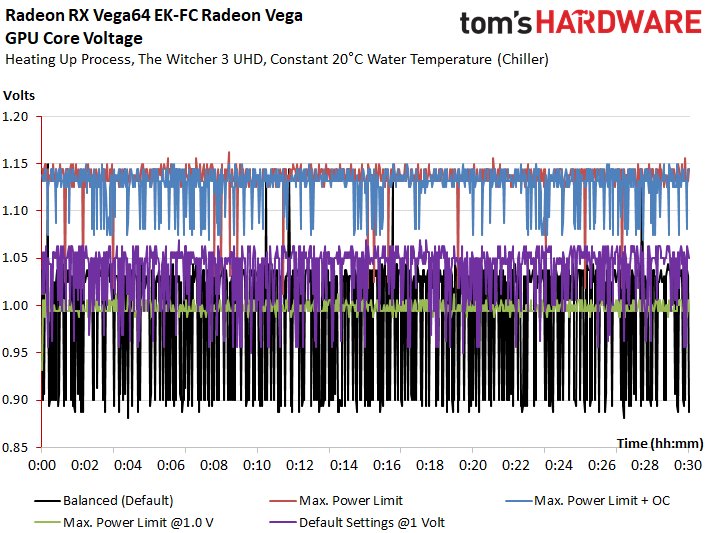
That's why we presented and compared them together in a second graphic. Where the card and AVFS in "Balanced Mode" can still fully comply with their rule frenzy, we are now interested in the two values that we were able to measure with a voltage specification of 1.0 volts.
While with maximized power limit, the 1 volt on average, the behaviour of the Radeon Vega64 at the standard power limit is downright paradoxical! It suddenly overvoltages to significantly higher values than in automatic mode and can no longer make the lowerings so delicately when the load changes.
The effective voltage over the entire runtime is thus not only significantly above (the preset) 1.0 volts, but also significantly above the effective voltage of the Balanced Mode!
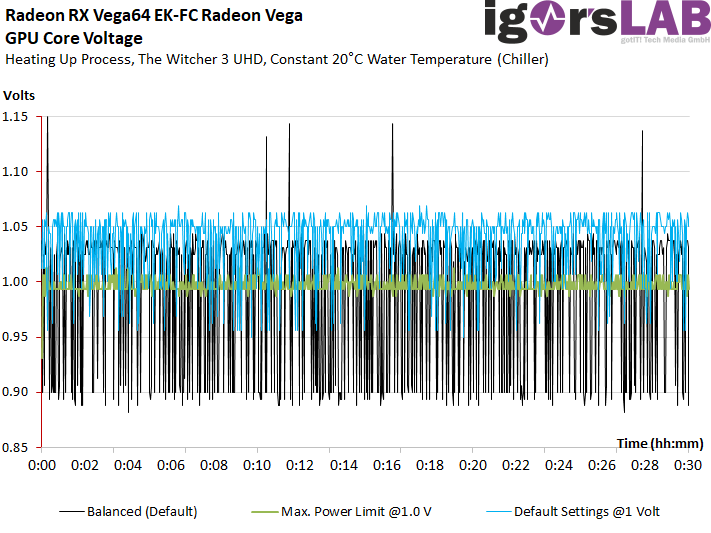
Nevertheless, this has a negative effect on the clock. We see very clearly that our voltage requirement without raising the power limit is downright counterproductive, because it undermines the entire telemetry completely uncoordinated. In return, one can be astonished to note how exactly the same specification with maximum power limit suddenly allows usable and above all stable clock rates, which are only just below what the automatic conjures up with significantly higher power consumption.
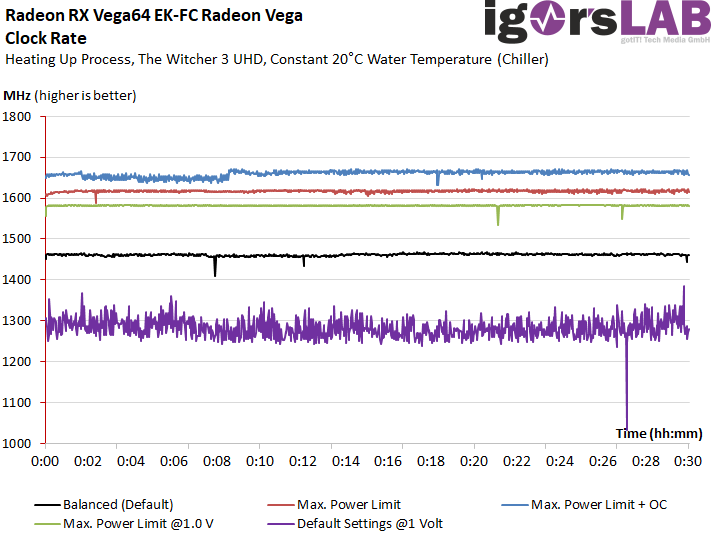
The first conclusion of this test is therefore that a manual sub-voltage by specifying a voltage that is still working in a stable way without a significant increase in the power limit will not be of any use at all, as soon as the temperature is excluded as a disturbing factor. Can. The manual reduction of the power limit without manual sub-volting is therefore preferable at any time (e.g. Use of "Save Mode"). The rest is an Urban Legend.
Power consumption in detail
With this insight in mind, we are now looking at the power consumption. First of all, it is positive that AMD has finally succeeded in significantly reducing performance in the idle. The measured 11 watts are now in the range of the GeForce GTX 1080 FE, which represents a significant gain and a significant improvement over the launch state.
What we now find confirmed in beams is the futility of the manual sub-volt at normal power limit. We don't save two watts, but we lose a lot of time. We will question this fact and its impact on gaming performance in more detail later in the efficiency analysis.
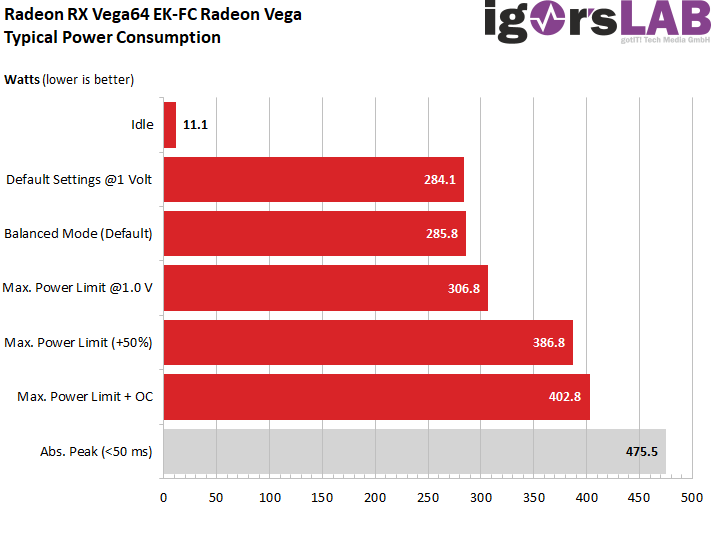
Much more interesting, however, are the other values where the under-voltage version surprised us most positively with the maximum power limit. This value also proves our statement that subvolts, if you can call it that at all, only have a positive effect in the upper limits of the power limit. The reasons for AMD's generous burst of tension are probably more to look for in the more generous binning, where this trick is likely to result in a slightly higher yield of chips.
Appendix: The course of power consumption
We have now sorted all five measurements in ascending order of power consumption and present them as gradient curves.
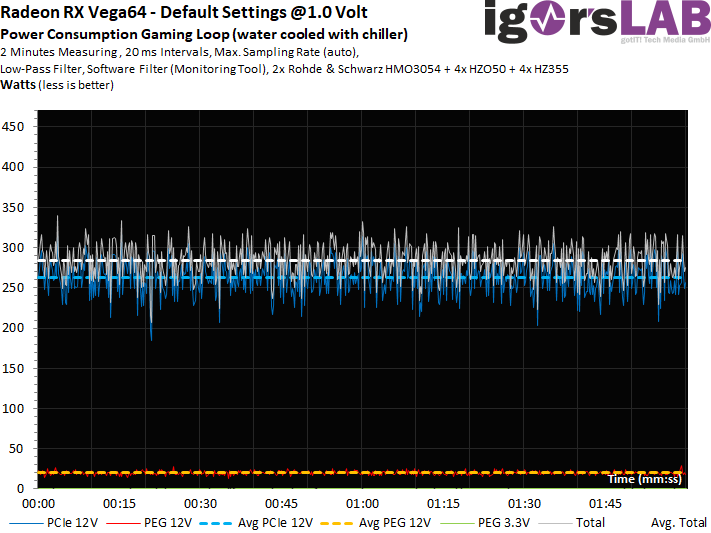
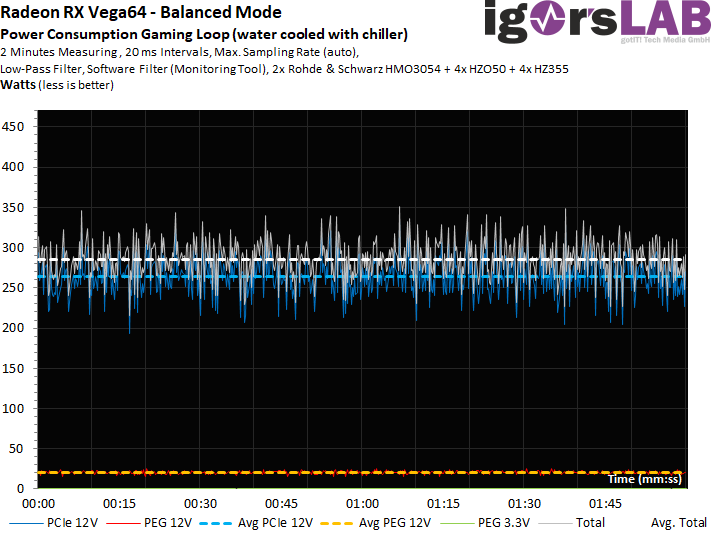
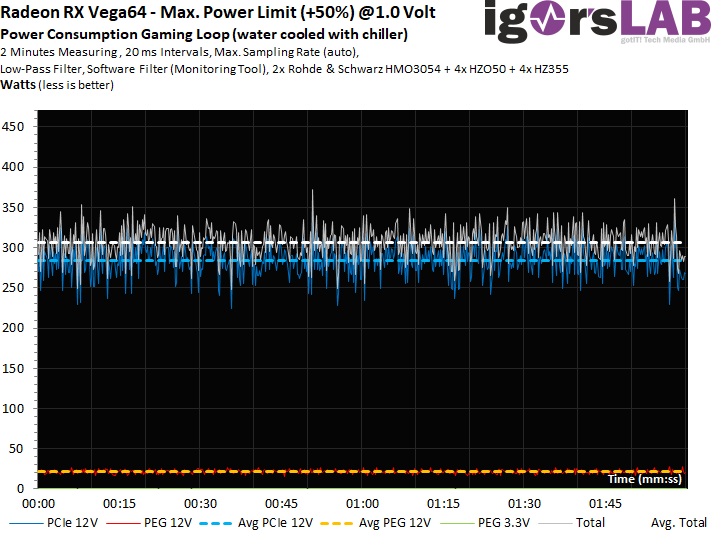
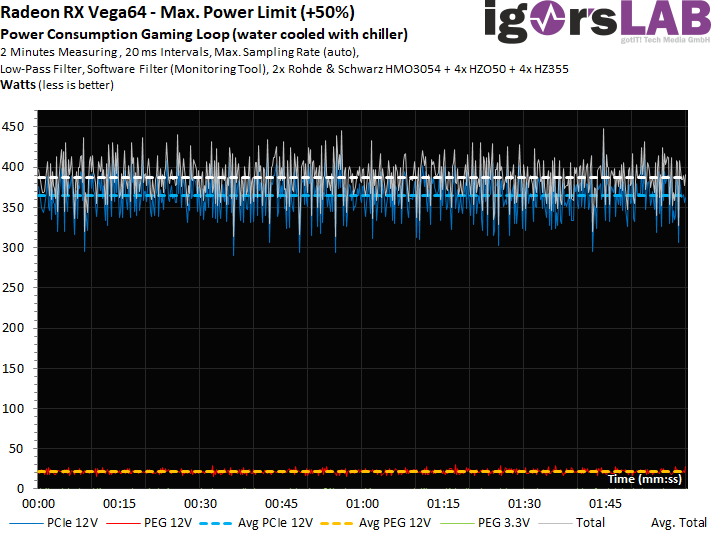
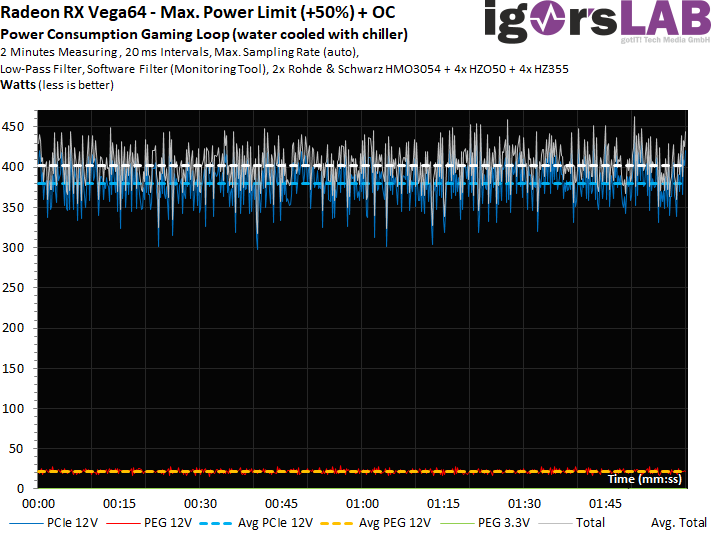
































Kommentieren